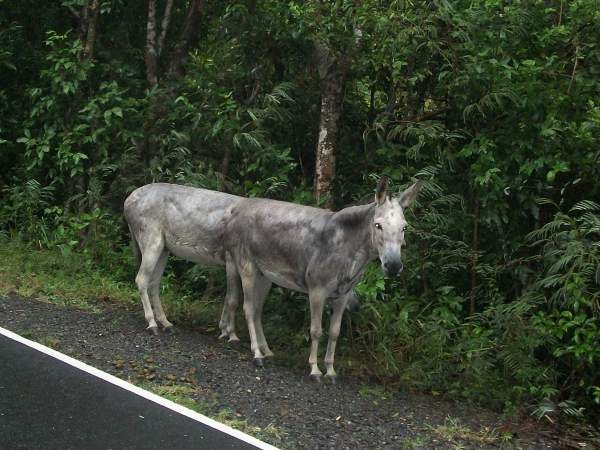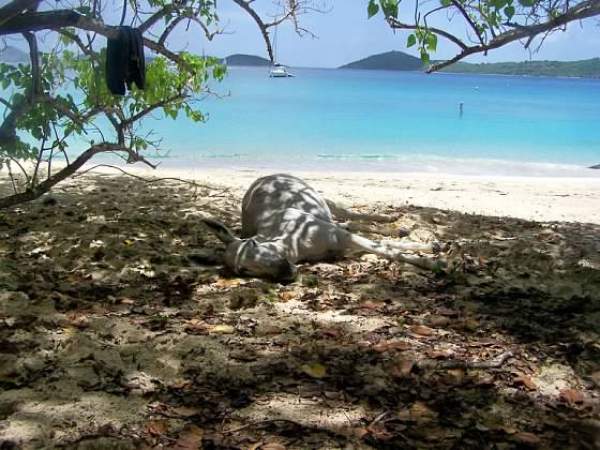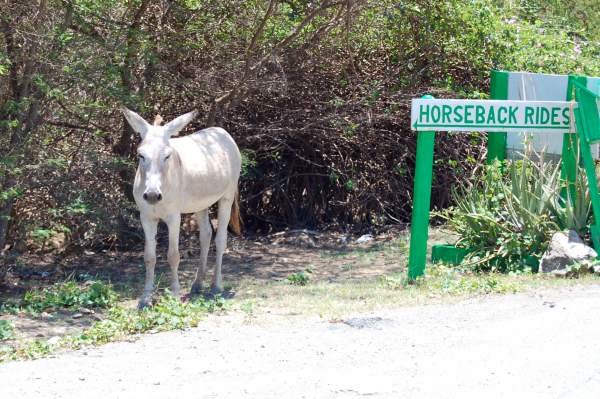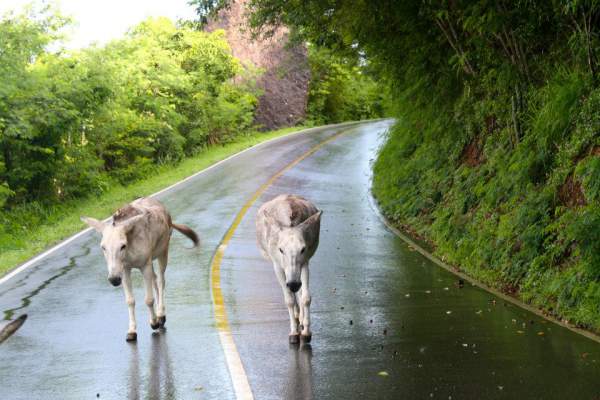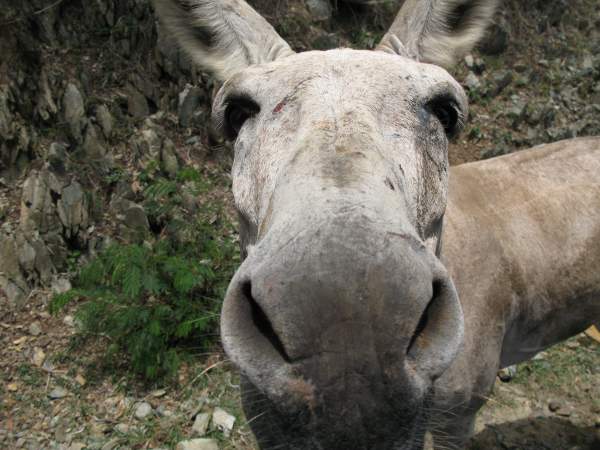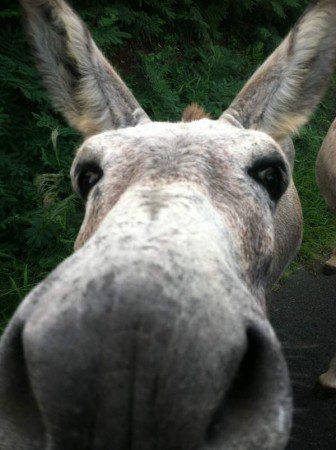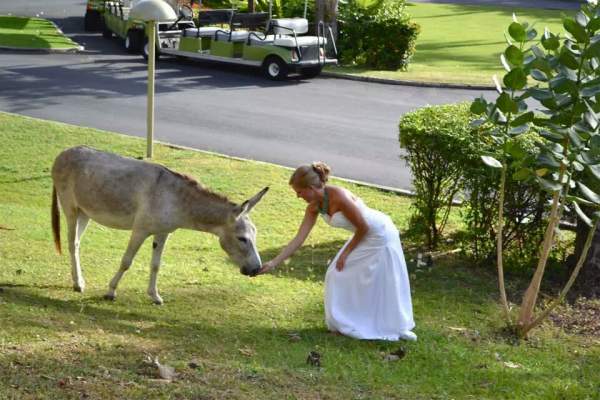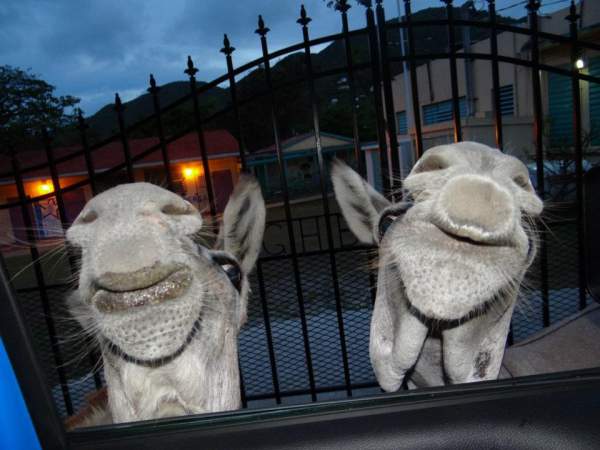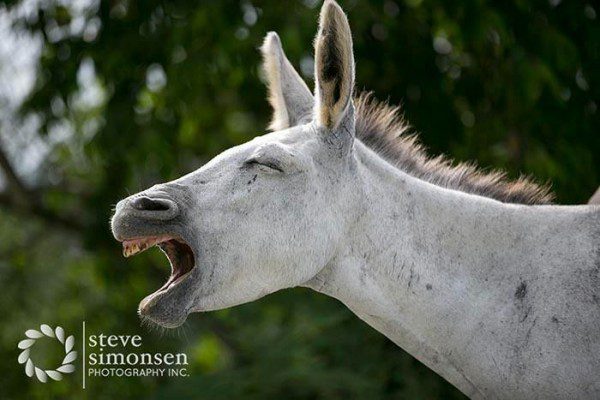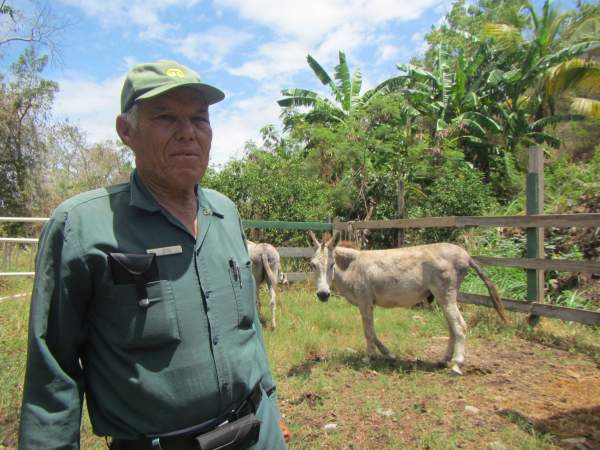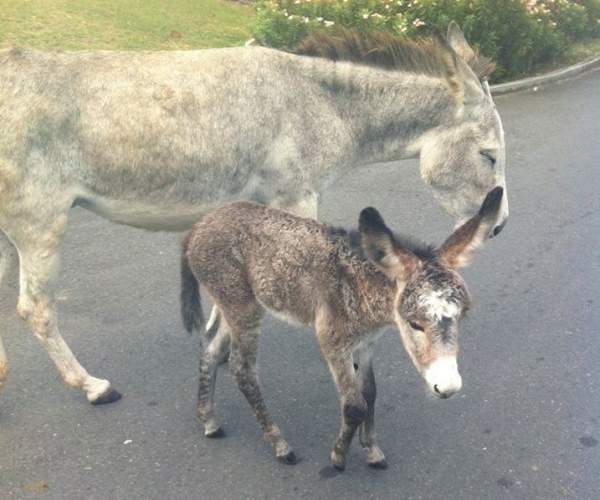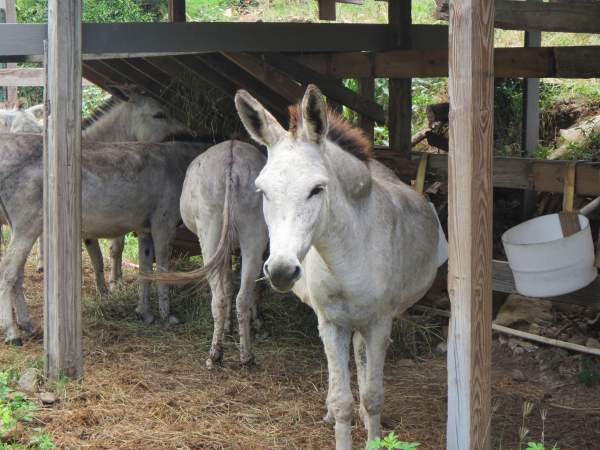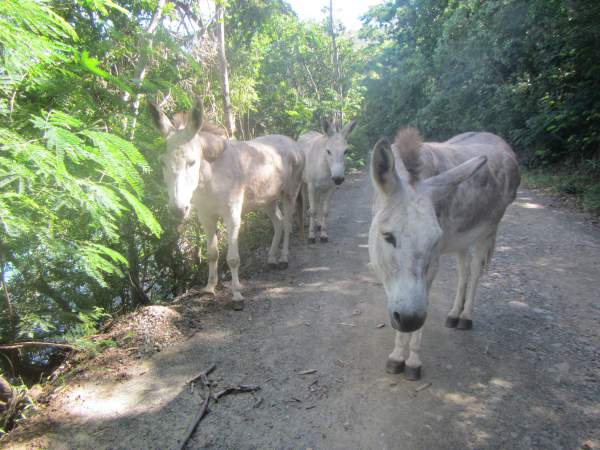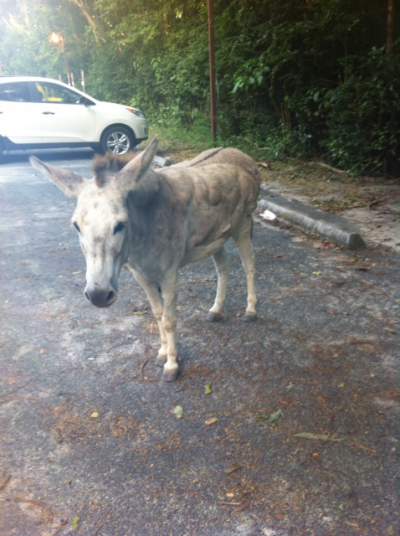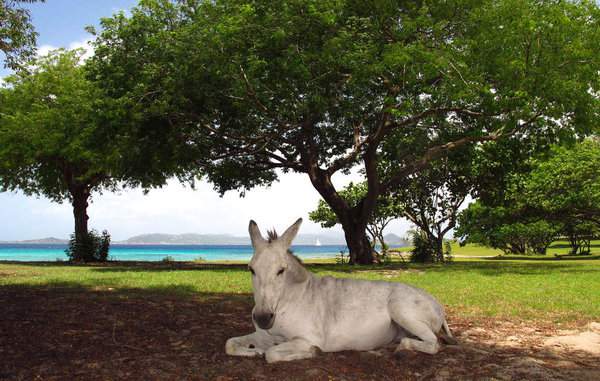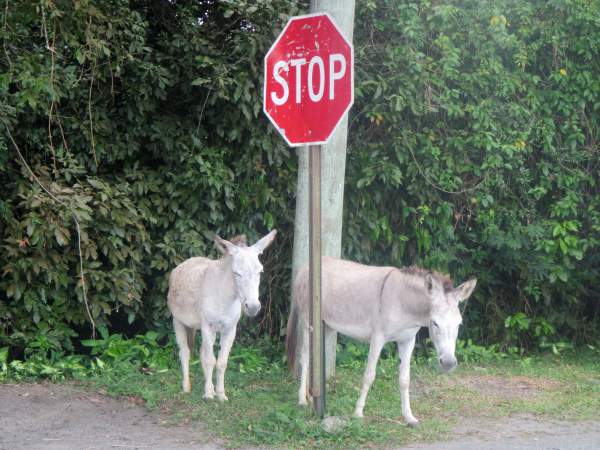
We read a story in the Tradewinds the other day about our beloved island donkeys. It was pretty interesting so we’d thought we’d share it with all of you. Apparently some of these fellas have gotten a bit too fat due to a diet that often includes pastries and a variety of foods fed to them by people. (I admit that I’m guilty too. I used to feed the donkeys years ago, but I have since stopped, and I ask that all of you do too.)
Here’s the story:
“Jenny” Craig Would Probably Cut Pastries from Donkey’s Diet
By St. John Tradewinds News
The good life is getting to at least one of the island’s signature donkey herds.
Living icons of the island’s agricultural past, several small groups of donkeys populate different areas of St. John, and a handful of animals in the most visible small herd which ranges from the Caneel Bay Resort have developed noticeable bulges under the skin of their hind quarters and sides.
The pronounced swelling has extended to the necks of several animals in the herd, which travels between Cruz Bay and Caneel Bay along the North Shore Road, creating large masses along the animals’ spines under their sparse “mane.”
“Fat on Well Fed Donkeys”
The bulges are “fat on well fed donkeys — especially breads and fruits,” according to Virgin Island’s veterinarian Dr. Laura Palminteri of Canines, Cats and Critters. who works on animals large and small in both the U.S. and British Virgin Islands.
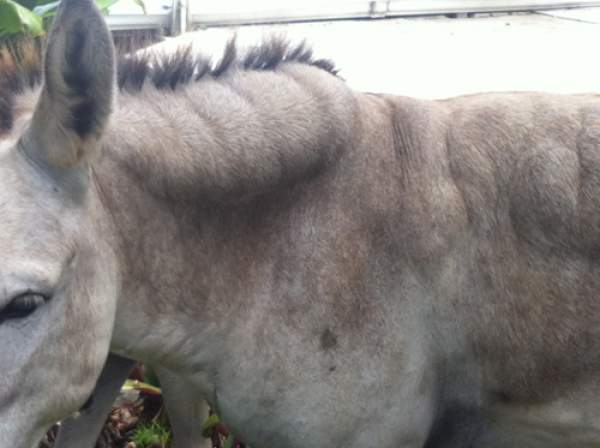
Oriel Smith, who works for Caneel Bay Resort and cares for the small herd of donkeys which have been habituated to the resort, admits he may be partially responsible.
“The over-weight donkeys that you see are males that have been castrated,” Smith emailed St. John Tradewinds. “While the donkeys are roaming the eastern part of the island they are abused, not fed and lots them are injured, so that is why I try to keep them at Caneel.”
“Not doing a good job at that!” Smith admitted.
It’s not that Smith doesn’t try to entice the donkeys to stay on the resort property.
“On occasion, I give them pastries”
“I feed them grain, hay and, on occasion, I give them pastries from the bake shop,” Smith explained.
“They are probably fed too rich a diet,” admitted Smith, who keeps close tabs on the herd. “Because they do not work, they store the fat.”
“Once they have that fat it is very difficult to get it off,” Smith said. “I am researching ways to get the fat off.”
Fitness and diet diva “Jenny” Craig might recommend Smith cut down on the Caneel Bay pastries in their diet.
Meanwhile, the Bordeaux Mountain and Coral Bay area herds do not appear to have the “fat” problem of the Caneel Bay and North Shore herd.
Of course they don’t.
They aren’t invited to Caneel Bay often…
…and they don’t like the resort’s parking policies for locals.


